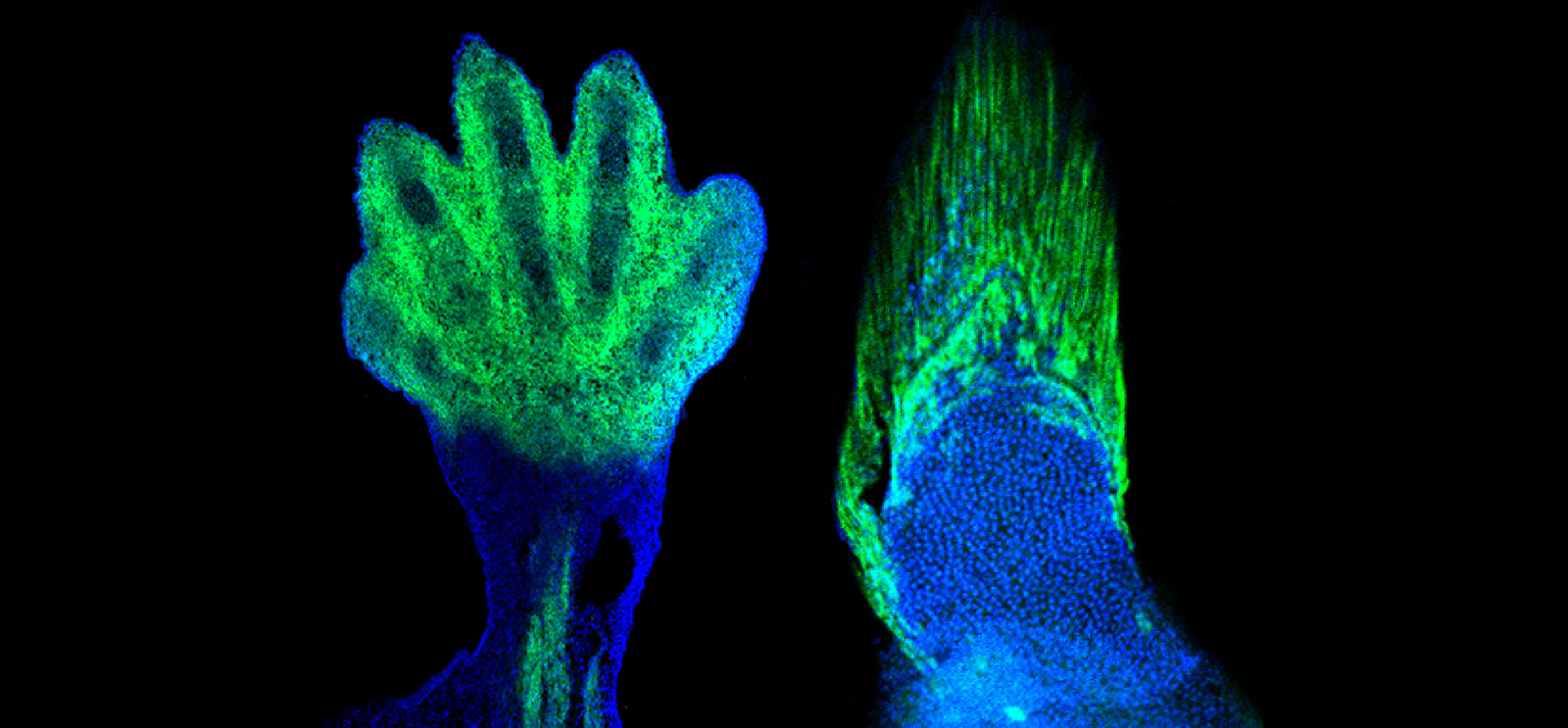
(Image courtesy Andrew Gehrke and Marie Kmita)
Two experiments reveal the genetic connections between fins and digits.
Some 375 million years ago, during the Devonian period, our ancestors emerged from the sea and walked on land for the first time. The evolutionary link between primitive fish and modern land dwellers gained key evidence in 2006, when Neil Shubin, the Robert R. Bensley Distinguished Service Professor of Organismal Biology and Anatomy, discovered a fossil of the transitional “fishapod” Tiktaalik, with features of both fish and four-limbed animals.
How fins and their bony rays evolved into limbs and digits has remained a puzzle. The two kinds of appendages have been thought to be distinct both structurally and developmentally. Notably, they are composed of different types of bone tissue—one type of bone formed directly for fin rays, a different type of bone preformed in cartilage for finger and toe bones.
Two recent studies in Shubin’s lab, however, revealed that the same genes influence the development of fin rays in fish and digits in mice.
In one study, postdoctoral scholar Tetsuya Nakamura used CRISPR/Cas, an advanced gene-editing technique, to delete the genes Hoxa-13 and Hoxd-13 from zebra fish—genes known to be important to the development of wrist bones and digits in mice. In Nakamura’s experiment, the zebra fish lacking those genes failed to fully develop fin rays.
Meanwhile, his colleague Andrew Gehrke, SM’13, PhD’16, used molecular markers in zebra fish embryos to label individual cells in which the same Hox genes are expressed. Since the embryos are transparent, he was able to follow the paths of the glowing cells as the fins developed. The marked cells, shown in green in the composite image above, grew into fin rays in the zebra fish, much as similarly marked cells had grown into digits in a mouse hand in a separate experiment.
Taken together, the discoveries “reveal a cellular and genetic connection between the fin rays of fish and the digits of tetrapods,” the researchers said—bolstering evidence of our own evolution from aquatic ancestors.
